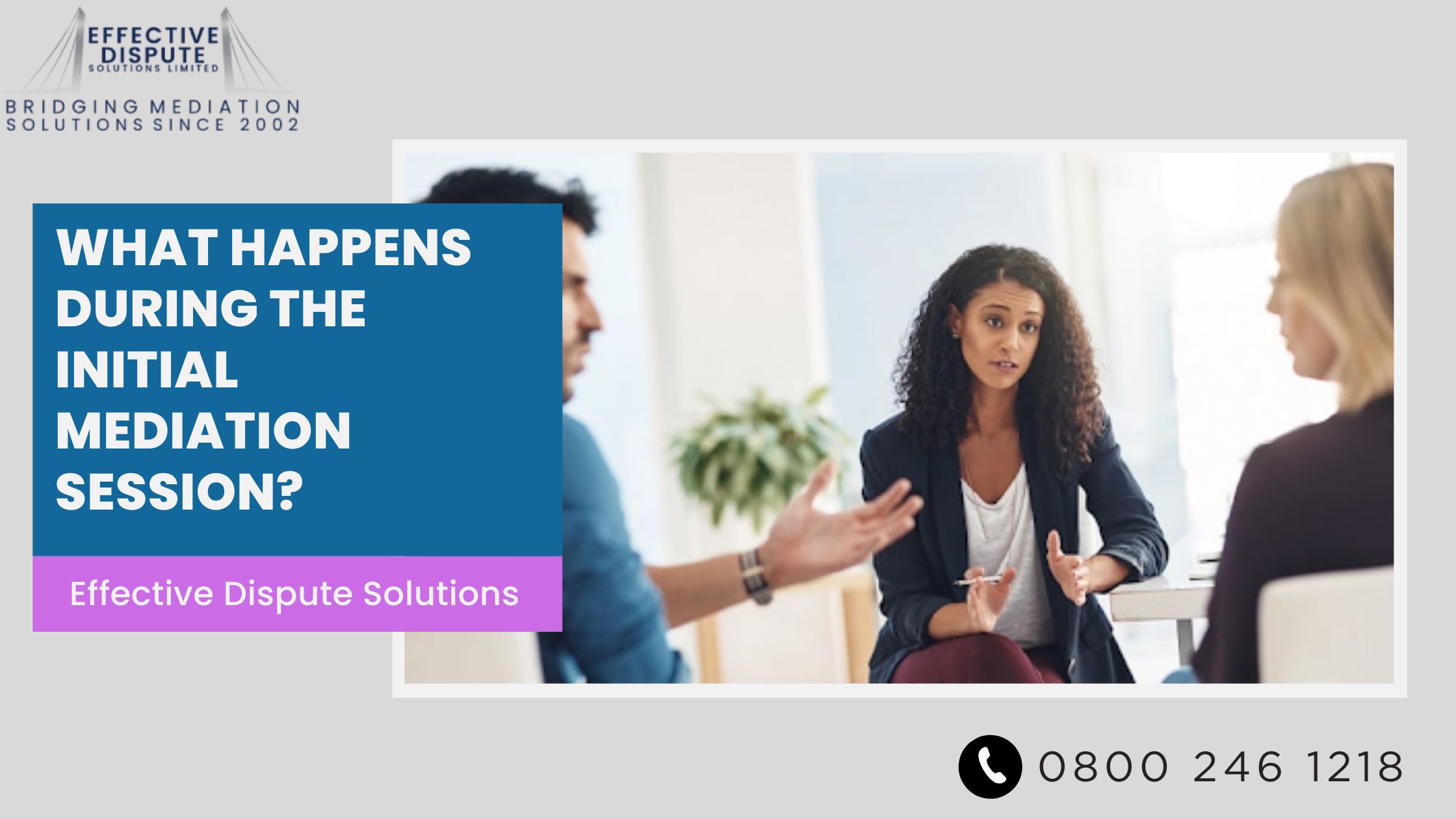Conflict is often a source of great stress for individuals. In some cases, attempting to resolve the issue independently yields no results. Mediation is aimed at resolving conflicts, but what actually occurs during the initial meeting? It is entirely normal to feel anxious prior to mediation, as all participants approach the situation with their unique anticipations. However, this blog will meticulously guide you through every step of the first mediation session in the UK.
Defining A Mediation Session
A mediation session is a gathering where contending parties come together with a neutral individual known as a mediator. The purpose is to engage in constructive dialogue and listen to each other thoughtfully, with the aim of reaching a mutually acceptable resolution. The mediator is impartial, meaning they will not make decisions or take sides—they only assist in facilitating dialogue while ensuring there is fairness within the process.
What does “Initial Mediation Session” mean?
The initial mediation session is the first opportunity for all participants to come together with the mediator to begin addressing their conflict. The way in which this session unfolds greatly impacts the rest of the process and serves as the foundation, clarifying expectations for everyone involved.
What is the Duration of an Initial Mediation Session?
An initial mediation session will last as long as it needs to. Anywhere between twenty minutes to two hours. No case is ever the same therefore sessions may be shorter or longer, depending upon several unique factors.
What Occurs During the First Mediation Session?
Let’s simplify the main portion you expect to occur during your first mediation session.
1. Welcomes and Introductions
Every mediator begins with a welcome, which includes introductions. The mediator shares their name and role along with each party to the mediation disputes. The mediator will ensure all parties are comfortable before proceeding.
2. Explaining the Mediation Process
The mediator explains the function of mediation. They discuss the objectives, which include the following:
- The main goal of mediation
- The ground rules (listening without interrupting)
- Confidentiality (what is shared within the room remains private)
- The voluntary nature of the process (no one is mandated to agree)
3. Agreement to Mediate
Prior to outlining the main issues of conflict or the dispute, all parties present are required to sign an “Agreement to Mediate”. This is a basic document that ensures all parties understand the process and agree to the stipulated ground rules. It also addresses matters concerning confidentiality, alongside the procedures to be followed if one of the parties opts to withdraw from the mediation session.
4. Outlining the Dispute
It is now appropriate for each individual to articulate their version of the events, which is often viewed as an opening statement. Each person describes:
- What is the problem from their perspective?
- How the problem has impacted them
- What resolution are they hoping for from the conflict mediation session?
- The mediator ensures that each person has an opportunity to present their side without interruption from others.
5. Setting the Agenda
Once everyone has delivered their views relative to the issues at hand, the mediator assists in setting an agenda. This refers to the identification of particular items that need to be addressed under the central umbrella of the issues raised. The agenda is effective in ensuring that the dialogue remains on track and that all essential topics are covered.
6. Joint Discussion
After defining the agenda, the group begins to discuss the main issues in sequential order. The mediator guides the discussion, ensuring balanced participation and maintaining decorum throughout the interactions. The aim is to appreciate the different perspectives and identify commonalities.
7. Private Sessions (If needed)
In some situations, the mediator may hold individual meetings with people during the first session. These are referred to as “private sessions” or “caucuses.” This provides an opportunity for all participants to voice concerns or discuss potential solutions with the mediator in private sessions. What you tell the mediator in these sessions will remain private unless you give permission otherwise.
8. Searching for Solutions
Depending on the progress within a selected time frame, the mediator might assist participants in brainstorming possible solutions. Sometimes this is done in the first session; in other scenarios, it is reserved for subsequent sessions. The focus is always on finding a workable solution for all.
9. Moving Forward
As with any other session, the mediator summarises the findings of the session and indicates what will follow, outlining any activities that may include scheduling a new session, gathering fresh information or preparing an outline of an agreement if there are considerable forward moves.
Guidelines for Your First Mediation Session
- Be honest: Convey your real thoughts and emotions.
- Listen: Make an effort to appreciate the opposing viewpoint, even if it seems unreasonable.
- Stay calm: Remember, the mediator’s role is to assist if the environment becomes hostile.
- Ask Questions: There’s no harm in seeking clarification if you’re lost.
- Be open: Willingness to embrace new concepts enhances mediation effectiveness.
Conclusion
The mediation session is a step to resolving conflicts quickly. It allows all parties to air their grievances, appreciate the process, and begin collaborating on possible solutions. Having adequate information on the procedure boosts confidence and creates a conducive atmosphere for participation.


